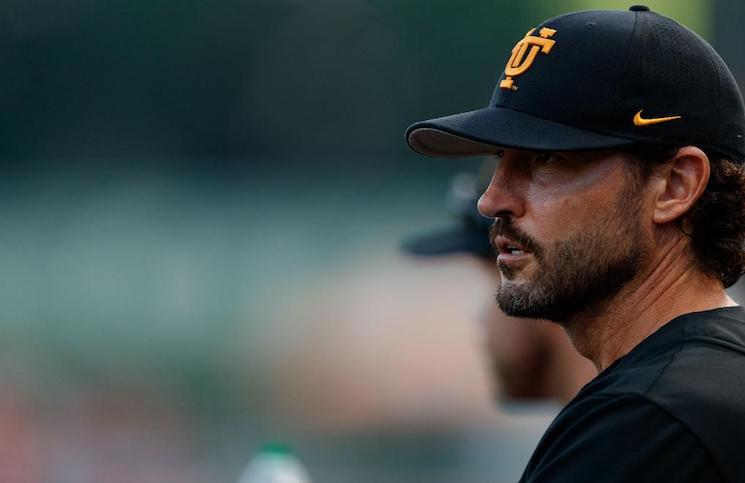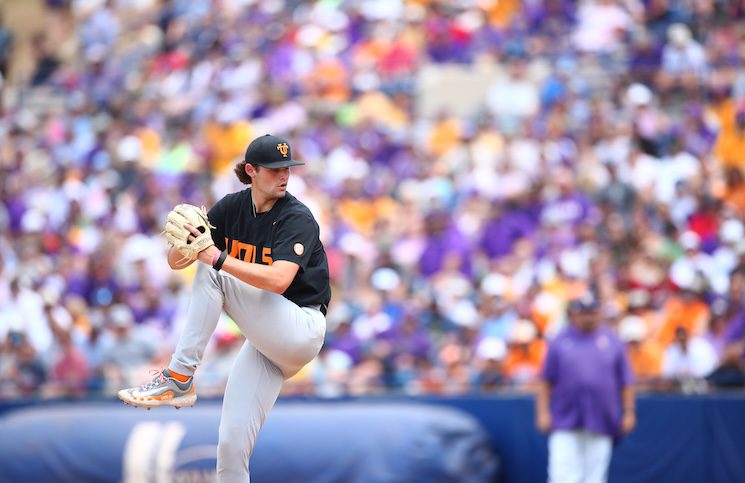
Tennessee found out on Sunday afternoon that they will be playing in the TaxSlayer Gator Bowl down in Jacksonville, FL on January 2nd. Their opponent is a team UT hasn’t played in over 30 years.
The Vols will be taking on the Indiana Hoosiers in the TaxSlayer Gator Bowl this postseason. Indiana and Tennessee last faced off in the Peach Bowl in 1988 to cap off the 1987 season. Tennessee won that game 27-23.
This year’s Indiana team finished the regular season 8-4, their best finish to a season since going 8-4 in 1993.
Here are five quick things to know about Tennessee’s 2019 bowl opponent.
Backup Quarterback
Indiana’s starting quarterback at the beginning of this season was a former Vol commit who was left out of Tennessee’s 2018 class after the hiring of Jeremy Pruitt. Michael Penix Jr. played as a true freshman for Indiana in 2018 and assumed control of the offense this year as a redshirt freshman.
Penix starting against the Vols in a bowl game would’ve made for a really intriguing storyline. Unfortunately, Penix won’t be playing.
The second-year quarterback has battled injuries throughout this season, and he suffered a season-ending injury in Indiana’s win over Northwestern on November 2nd.
Serving in his place has been junior Peyton Ramsey. The 6-foot-2, 216-pound Ramsey started for the Hoosiers last season, and he’s been a much more effective passer this year for Indiana. Ramsey has played in 10 games and has made seven starts for the Hoosiers, completing 69.2 percent of his passes (184-of-266) for 2,227 yards, 13 touchdowns, and only four interceptions. He’s also run for 198 yards and six scores on 80 carries.
Ramsey has thrown for over 300 yards in three of his last five games, and he’s totaled 919 passing yards, four touchdowns, and an interception in Indiana’s final three games of the year, all starts for him.

Good Offensive Numbers
On paper, Indiana’s offense looks formidable.
The Hoosiers rank second in the Big Ten in yards per game on offense, averaging 443.6 a game and trailing only Ohio State (531.0). Indiana is fourth in the Big Ten in yards per play (6.08) and sixth in scoring offense (32.6 PPG).
Along with Ramsey at quarterback, Indiana has a capable running back in Stevie Scott. The bruising 6-foot-2, 231-pound back ran for over 1,000 yards as a freshman last season, and in 11 games this year he has 845 yards and 10 touchdowns on 178 carries. He also has 26 catches for 211 yards and a score, giving him over 1,000 yards from scrimmage.
Whop Philyor is Indiana’s leading receiver. The 5-foot-11, 180-pound wideout has 69 receptions for 1,001 yards and five touchdowns on the year. Indiana features three other receivers who have over 500 receiving yards on the season behind Philyor.
Peyton Hendershot (46 rec, 555 yards, 4 TD), Ty Fryfogle (42 rec, 541 yards, 3 TD), and Nick Westbrook (38 rec, 524 yards, 5 TD) have all been competent targets through the air this season, too. Hendershot is the team’s tight end, and at 6-foot-4, 255 pounds, presents a match-up problem. Both Fryfogle and Westbrook measure in at over 6-foot-2 as well.
Bad Defense
As good as Indiana’s offense has been, their defense has been just about as equally bad this year.
The Hoosiers are allowing 24.5 points a game, which ranks ninth out of 14 teams in the Big Ten. They’re giving up 350.4 yards a game to opposing offenses, and teams are averaging 5.36 yards a play against them.
Indiana ranks in the bottom half of the Big Ten in scoring defense, rushing defense, passing defense, total defense, sacks, red zone defense, and turnovers forced.
And the Hoosiers’ defense put up those less-than-impressive numbers against some pretty weak competition. But more on that in a moment.
A Historic Season So Far
The last time Indiana’s football program had a winning record was in 2007, and they hadn’t finished above .500 in conference play since 1993.
All that changed this season.
In Tom Allen’s third year as the Hoosier’s head coach, he helped lead them to an 8-4 record and a 5-4 finish in Big Ten play. Indiana’s eight wins this season are the most since they went 8-4 in 1993, and it’s the first time since that same 1993 season that the Hoosiers have won five games in Big Ten play as well.
The TaxSlayer Bowl is Indiana’s first bowl appearance since 2016, and the Hoosiers will be looking for their first bowl victory since 1991 when they won the Copper Bowl against Baylor.
Allen’s 2019 Indiana squad rose to No. 24 in the AP Poll following four-straight wins from October 12th through November 2nd, but they fell out of the polls after losing 34-27 to Penn State. That brief one-week stay in the AP Poll marked the first time Indiana had been ranked in football since 1988.
They Ain’t Played Nobody, Paul
Indiana’s turnaround from going over a decade without a winning record to an 8-4 mark this year is highly impressive, but it deserves somewhat of an asterisk.
The Hoosiers have played a grand total of four teams that finished with a record of .500 or better this season, and they lost to all four of them. Indiana was blown out 51-10 by eventual Big Ten champ Ohio State, lost 40-31 to Michigan State (who was ranked No. 25 at the time but finished the year 6-6), lost 34-27 to then-No. 9 Penn State, and lost 39-14 to then-No. 12 Michigan.
Every other team Indiana has played this season finished the year with a losing record. And some of those teams have been really, really bad.
Indiana’s two best victories this year have been a 38-31 win over a 5-7 Nebraska team on the road and a 44-41 double-overtime victory over a 4-8 Purdue team on the road to end the regular season. The Hoosiers beat Ball State on a neutral field 34-24 to begin the year, and Ball State finished 5-7.
Every other team on Indiana’s schedule that they beat finished with three or fewer wins on the season.
The four teams Indiana lost to have a combined record of 38-11. The eight teams Indiana has beaten have a combined record of 24-60.




